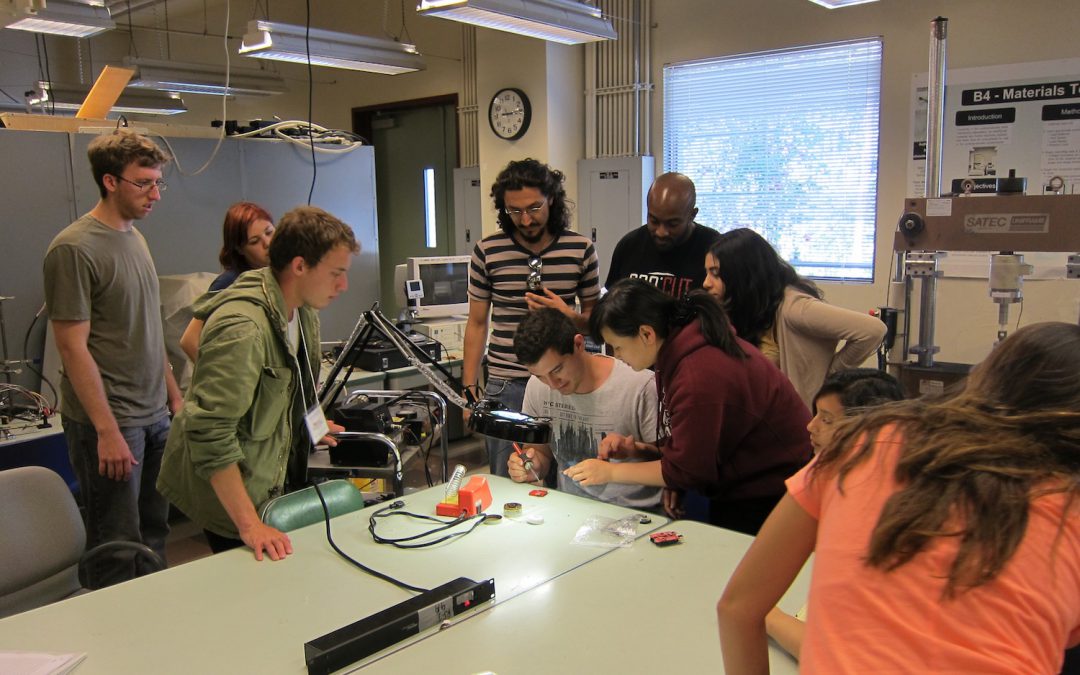WASHINGTON – President Donald Trump’s proposal to cut NASA’s 2018 budget means its education office, which creates programs for students from grade school through college would be eliminated. But Robert Lightfoot Jr., NASA’s acting administrator, assured senators the agency’s focus on education won’t change.
Lightfoot spent much of his time before the Senate space committee defending the agency’s proposed $19.1 billion budget, a drop of $561 million from current spending.
NASA’s Space Grant program, founded in 1989 to expand science, technology, engineering and math education access, as well as the Established Program to Stimulate Competitive Research – or EPSCoR, designed to improve regional research infrastructure and R&D capabilities, would both end under the current proposal.
But Lightfoot said many education programs including grants, research challenges and prizes are funded by areas other than the education office, and would not be affected.
Education programs under NASA’s Science Mission Directorate would see a $10 million budget increase, according to Acting Chief Financial Officer Andrew Hunter. The agency’s budget blueprint calls the changes a “more focused education effort.”
But Lightfoot acknowledged some programs will be ended. “Will it replace what we have today? No,” Lightfoot said.
Then he emphasized the importance of NASA’s missions in stimulating young people’s interest in STEM subjects.
“Our missions do inspire the next generation as much as the hands on work does,” he said. “That’s what we’re trying to do.”
The promise of continued challenges and prizes didn’t quell senators’ fears that shuttering the education office would hurt STEM education in smaller communities. Republican Sen. Shelley Capito of West Virginia noted the success of the established programs in her state. In 2015, 205 West Virginia students, 10 percent of whom are minorities, participated in Space Grant programs.
“[The budget cuts] could have a chilling effect on the educational programs that NASA is offering across the country where otherwise they might not be available,” Capito said.
NASA funds Space Grant associations in all 50 states, plus Puerto Rico and the District of Columbia. These groups connect schools and industry partners to promote STEM education and fund scholarships and fellowships. All 52 would end under the Trump administration’s budget proposal.
“Honestly I don’t think I will have the same network. But we have the ability to still use our missions…to get challenges out there for the students to engage in,” Lightfoot said.
NASA lists 47 open science challenges for students with awards on its website. Prizes and competitions are listed briefly under Agency Technology and Innovation in the science mission fact sheet, with $31.9 million allocated. in the next fiscal year, which begins Oct. 1. The U.S. academic base is mentioned once under Technology R&D, but the word ‘education’ doesn’t appear at all.
“I think the biggest challenge for us is stability, constancy of purpose,” Lightfoot said, noting that the reduced budget proposal would decrease NASA spending by $4.5 billion over four years. “How do I plan for that?”
Sen. Richard Shelby, R-Ala., accused both the Obama and Trump administrations of stifling NASA’s ability to keep the U.S. at the forefront of aeronautics and space technology.
“The current administration picks up where the previous administration left off — by projecting a lofty vision for space, while providing a budget that keeps the vision from leaving Earth,” Shelby said.
The House Appropriations Committee has already proposed increasing NASA’s budget by $800 million over the Trump budget, giving the agency close to $20 billion. The committee is expected to have a final vote on the increase after Congress returns next month.


